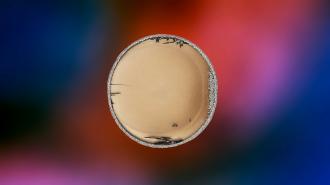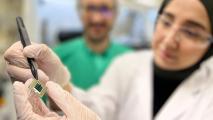The future of quantum memory is taking shape in Japan, where researchers have grown diamond wafers that could store the equivalent to one billion Blu-Ray discs worth of quantum data.
Why it matters: Quantum computers use the strange physics of the subatomic world to process calculations far more quickly than classical computers can.
The technology is still in the early stages of development, but if it can overcome the practical hurdles, it could lead to breakthroughs in everything from healthcare to astronomy.
Diamond is one of the most promising materials for quantum memory.
The challenge: Just like classical computers have places where they can store data, quantum ones need their own memory devices.
Diamond is one of the most promising materials for quantum memory because it contains defects known as “nitrogen-vacancy centers” that can store quantum data at room temperature.
The diamond wafers used for quantum memory won’t work properly if their nitrogen content is greater than three parts per billion (ppb), though, and so far, the largest wafers that meet that purity standard are just 4 millimeters in diameter — too small for practical applications.
What’s new? Researchers from Japan’s Saga University and Adamant Namiki Precision Jewel Co. have developed a process for growing diamond wafers, with the correct purity levels, that are 5 centimeters wide — more than ten times the previous record.
They call them Kenzan Diamonds, and the key was allowing the diamond to grow on a stepped substrate, rather than the traditional flat substrate. This reduces stress on the diamond, letting the wafer grow larger without cracking.
This approach also reduces the amount of nitrogen gas needed to accelerate the diamond’s growth, leading to higher purity.

Looking ahead: In May, the researchers will present a paper on their diamond wafers at the CS MANTECH conference in California. They’re now working to double the wafers’ diameter and develop peripheral technology, including polishing tech.
Adamant Namiki’s goal is to have the diamond wafers ready for commercial release in 2023, at which point they could be used by researchers to dramatically increase the quantum memory of in-development computers.
We’d love to hear from you! If you have a comment about this article or if you have a tip for a future Freethink story, please email us at tips@freethink.com.






